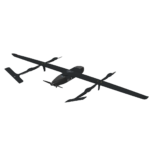
The outgoing leader of U.S. Africa Command (AFRICOM) said last week he sees a need for new counter-drone and long-endurance surveillance systems to bolster capabilities for U.S. forces and partner nations in the region. Army Gen. Stephen Townsend, commander of AFRICOM, told reporters he specifically sees the threat of armed drones becoming an increasing challenge similar to the threat posed by adversaries in the Middle East in recent years. “For the last six years, American soldiers [in the Middle East]…

 By
By 











